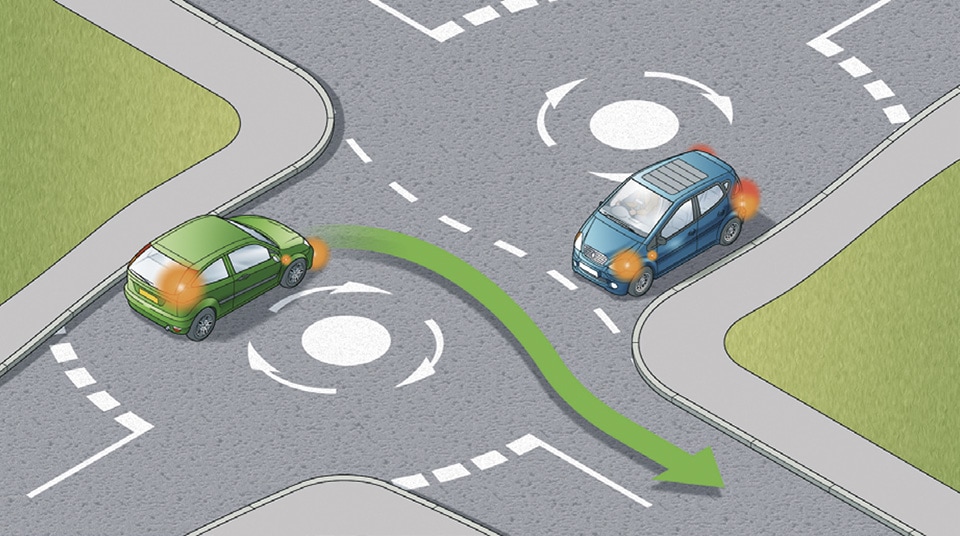
Mini Roundabouts are the white circles painted on the road.
They follow the same rules as normal roundabouts: give way to traffic on your right.
Mini roundabouts are often found where there used to be a T-junction. Replacing T-junctions with mini-roundabouts serves three purposes:
- To improve traffic flow by giving each direction an equal chance to proceed.
- To slow traffic down in residential/school areas as a form or traffic calming.
- To confuse learners.
The reason for the confusion is because mini roundabouts are small, and everybody seems to be “on top of each other”. Stick to the rules: if you have priority then take it but proceed with caution in case the next driver is also confused.
Identifying a mini-roundabout.

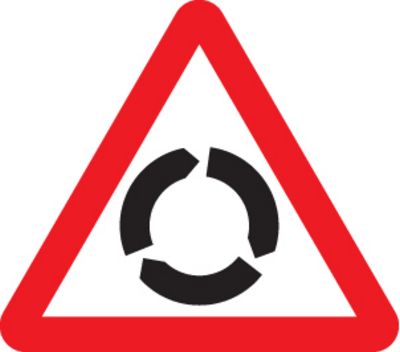
Mini roundabouts can be identified by a blue sign with three white arrows. Strictly speaking, this means you must proceed clockwise. The need to give way to the right is indicated by a single dashed line on the road at the entrance to the roundabout. You may also see a triangular warning sign; but not always, so always keep alert.
Go around the roundabout (round and around)
The Highway Code states that All vehicles MUST pass round the central markings except large vehicles which are physically incapable of doing so. Remember, there is less space to manoeuvre and less time to signal. Avoid making U-turns at mini–roundabouts. Beware of others doing this.
This does not mean making an effort to go around as best you can: it means you must go around, and if doing so requires you to slow down to a handful of miles per hour in first gear then do so. After all, one of the purposes of a mini-roundabout listed above is traffic calming.
Because you will be doing lots of steering in a short space of time signaling on approach and on exit may not be practical. It is quite acceptable to signal your intention on approach and then omit the exit signal.
Making a U-turn at a mini-roundabout is not illegal but it is often impractical unless your vehicle is very small and the roundabout is large. The Highway Code discourages it, although you should be aware that any vehicle signaling right might be about to double-back on itself.
Who goes first?
I am not sure about […] mini roundabouts, most of the time, around here, it just adds to the confusion. I just work on the cars speed, position and eye contact if possible with a side serving of common sense.
Anon
Because mini-roundabouts are small, and other vehicles are quite close to you, it is easy for new learners to get a little confused at who has priority. The rule is the same for any other roundabout: give way to traffic already on the roundabout and traffic on your right but let’s use some diagrams to demonstrate the possible situations.
I encourage my learners to approach a mini roundabout with their index finger on the right hand raised, and for them to say out loud, “you go“. Then for them to swap hands and raise their left index finger and say, “you stay“.

In the diagram above, the yellow car must be prepared to give way to the red and blue cars, as they are to the right. However, look carefully at the direction signals are cars A and B; they will not actually cross your path and so you could proceed with caution. Note also that we have a stalemate situation with each car giving way to the right in an endless loop. In this scenario, somebody has to go first, and it may as well be you … proceed with caution and be prepared to stop if other vehicles begin to move. The main rule for surviving a mini-roundabout is expecting others to be as confused as you are, and be nice to each other.
At a three-way mini-roundabout, the layout may resemble a T-shape, and this is often where the confusion is greater, especially as it will appear different depending on your approach direction.
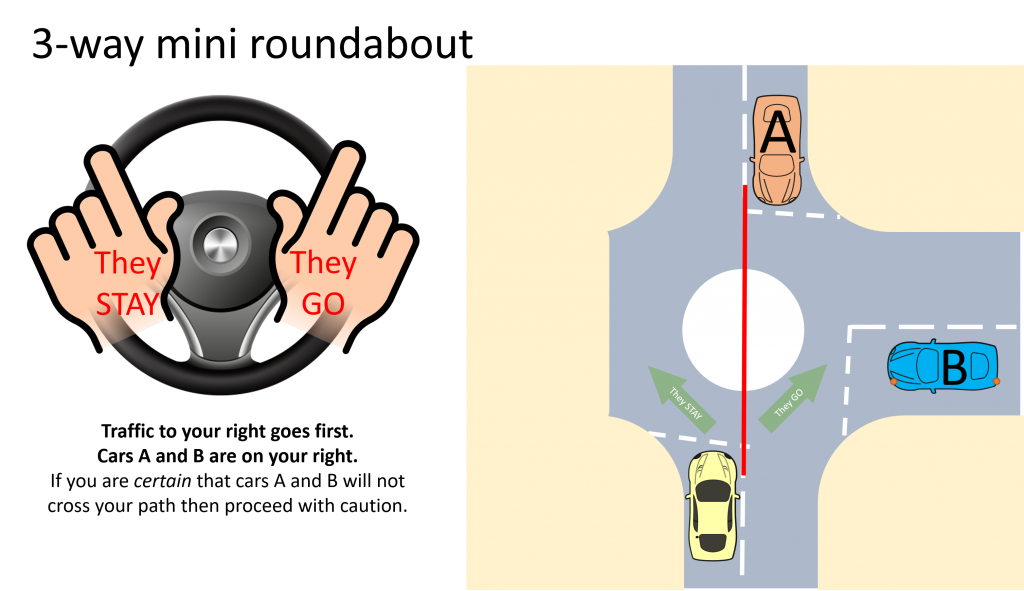
With the T-to the right, Cars A and B technically have priority, however, if U-turns should be avoided then car A is unlikely to cross your path and you could proceed with caution. You may then find that car A gives way to you because you are on their right! If car B is signaling right then it is likely to cross your path: if it is signaling left then you could proceed with caution. Be nice to each other and be prepared to give up any priority you might have.
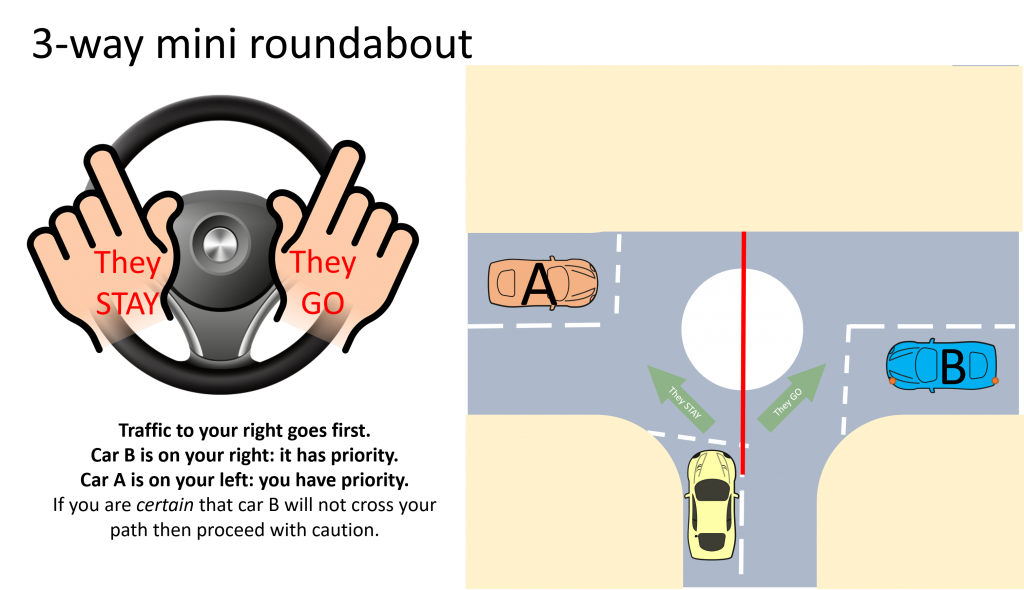
With the T going both left and right, Car B has priority over the yellow car, although if it is signaling left then it will not cross your path and you could proceed with caution. Car A should give you priority if you are turning right.
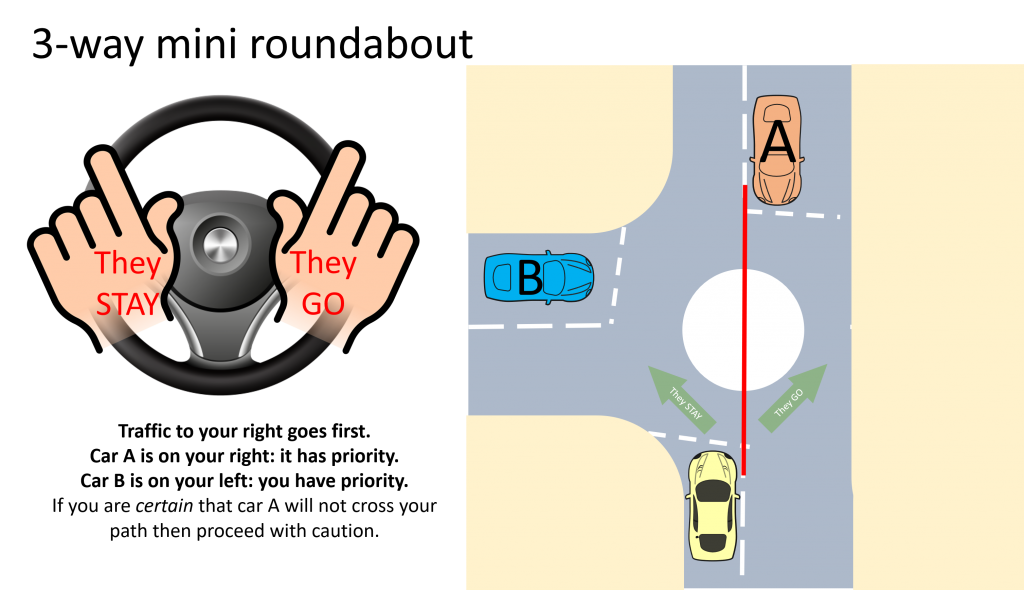
Explaining this one is up to you. Put your answer in the comments. Remember the key principle of giving way to the right and being nice to everyone!
